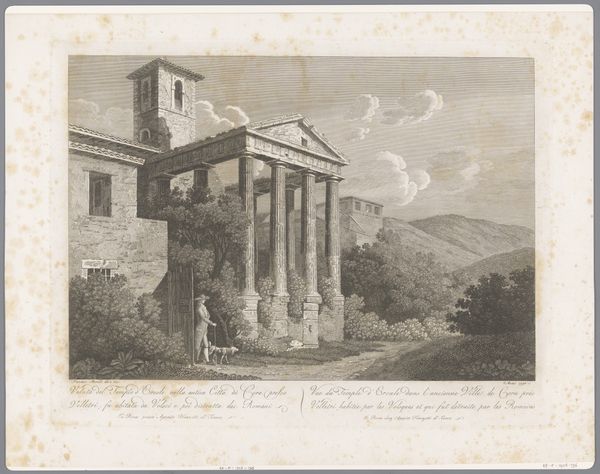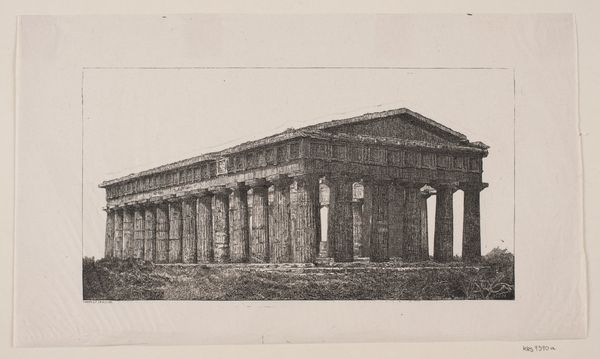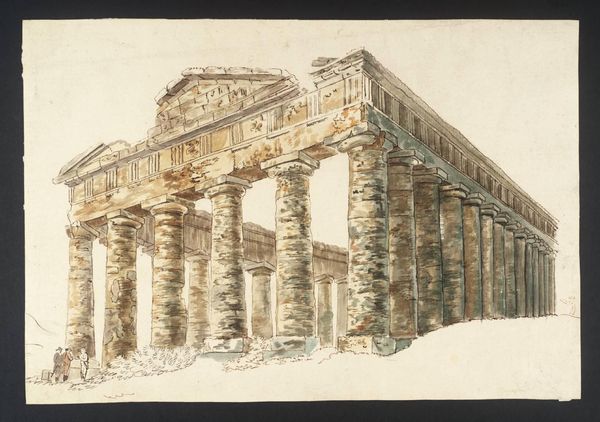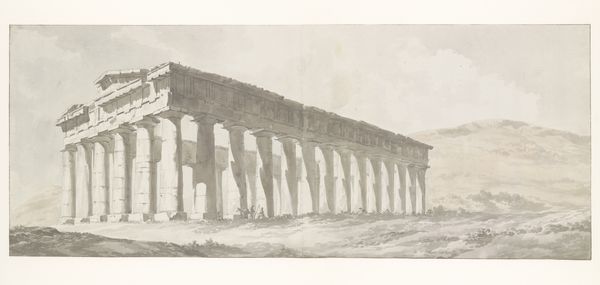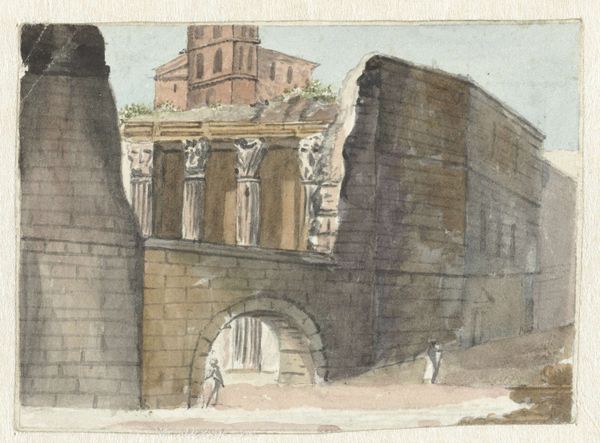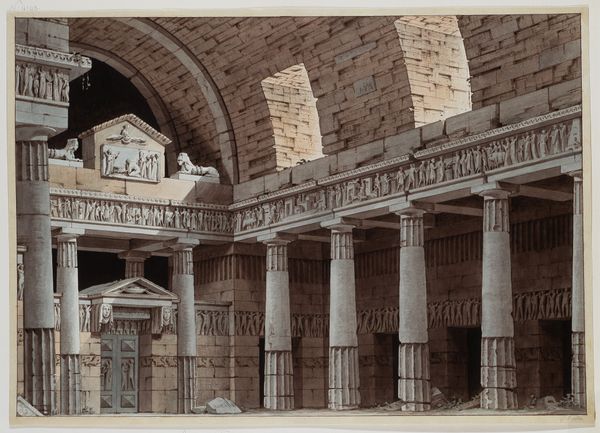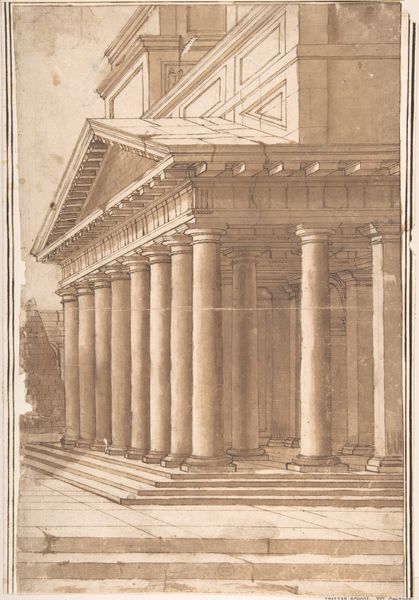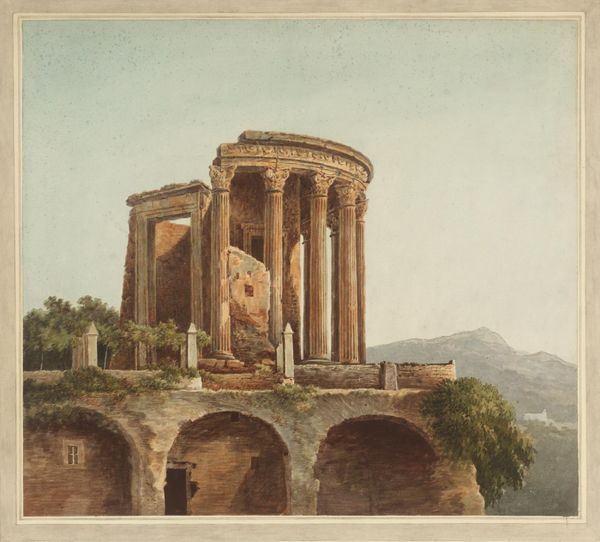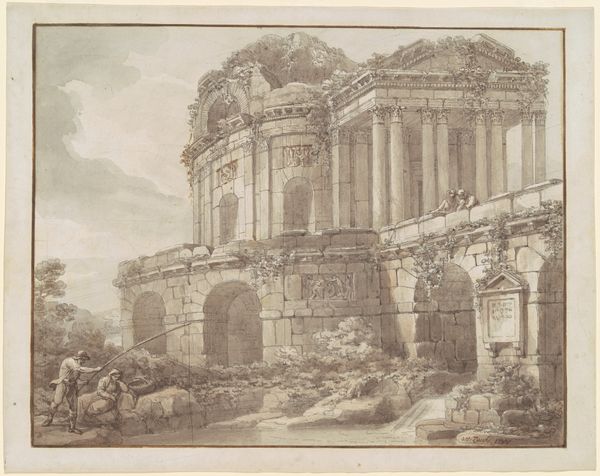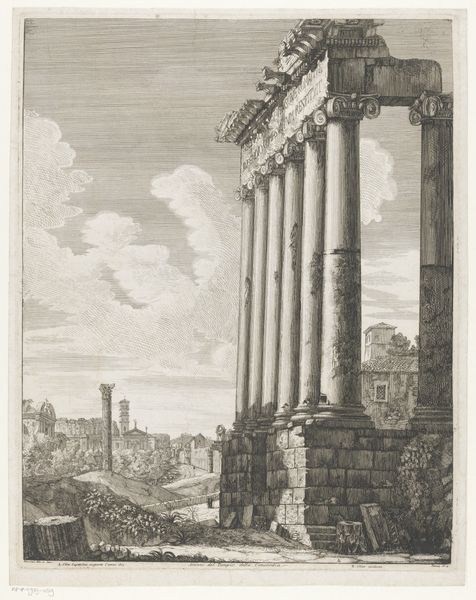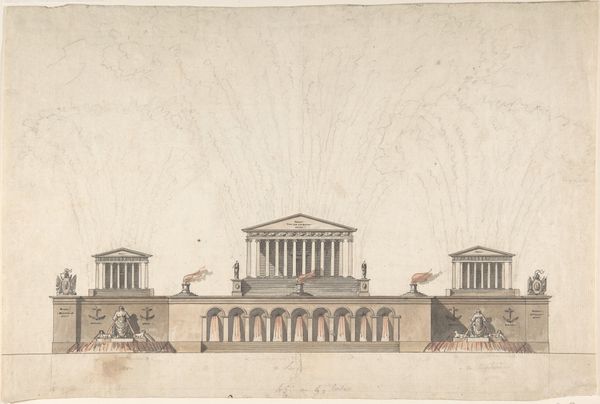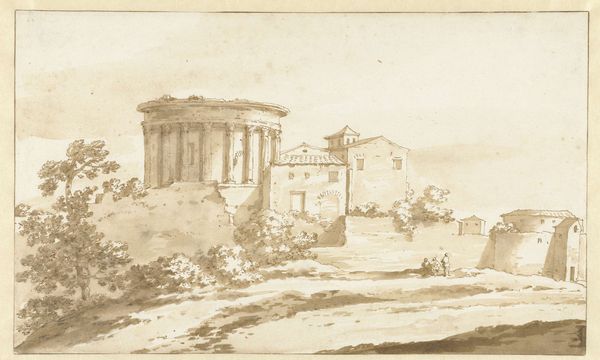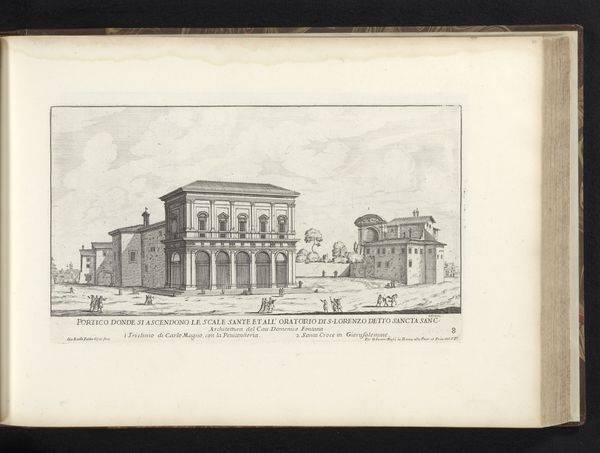
drawing, tempera, paper, watercolor
drawing
aged paper
toned paper
water colours
tempera
greek-and-roman-art
paper
watercolor
coloured pencil
ancient-mediterranean
cityscape
watercolour illustration
watercolor
realism
building
Dimensions: height 89 mm, width 136 mm
Copyright: Rijks Museum: Open Domain
Curator: This watercolour, attributed to Ernesto Richter and titled "Exterior of the Temple of Vesta in Rome", invites us into a scene brimming with classical antiquity, dating from before 1907. Editor: My initial reaction is that it's rather serene. The gentle colours and meticulous detail give a tangible sense of reverence to these Roman ruins, making the artwork feel more real, as if capturing the mood and the moment rather than just representing buildings. Curator: Indeed. It's intriguing how Richter employs watercolour and tempera—humble, portable materials—to document such monumental structures. This speaks volumes about the accessibility and perhaps the democratization of art production in that era. Travel sketches like this were a product of their time, a pre-photographic method for representing landscapes. Editor: Look at how the light defines form, however! See the texture he creates on the pillars? He contrasts light and shadow that creates the sense of depth and volume; he uses simple artistic principles that transform the ordinary paper medium into the monumental space and the timeless aura of ancient Rome. Curator: Yet, that texture is crucial. The evident aging of the paper contributes to our understanding too, the wear mirroring the degradation of these architectural sites over time. The work on 'toned paper' adds depth to the composition as a whole, adding even more weight to Richter's craft. Editor: That layering effect, though! Look closer - the paper, the light, and then this very delicate linear structure on these aged surfaces! And that subtle, precise realism--that is a result of an understanding of form and light which transforms the work and is, for me, the core beauty. Curator: We’re perhaps witnessing a collision of industry and art. A world of increased movement due to advances in transportation made sights such as Rome accessible to new markets and new audiences; Richter provides them the ability to bring art, architecture and travel all under one roof. Editor: It brings a contemplative spirit in a way. And really encourages us to examine the artwork as a moment frozen in time: it highlights the intersection between perception, technique, history, and architecture; how all elements build this fascinating dialogue, the harmony between our vision and ancient echoes that are reflected. Curator: I completely agree, an elegant reminder of the ways in which simple acts of creation become testaments of our social worlds, too. Editor: Absolutely; each line tells a story, layering not just technique but inviting a profound and multifaceted appreciation for visual storytelling.
Comments
No comments
Be the first to comment and join the conversation on the ultimate creative platform.
